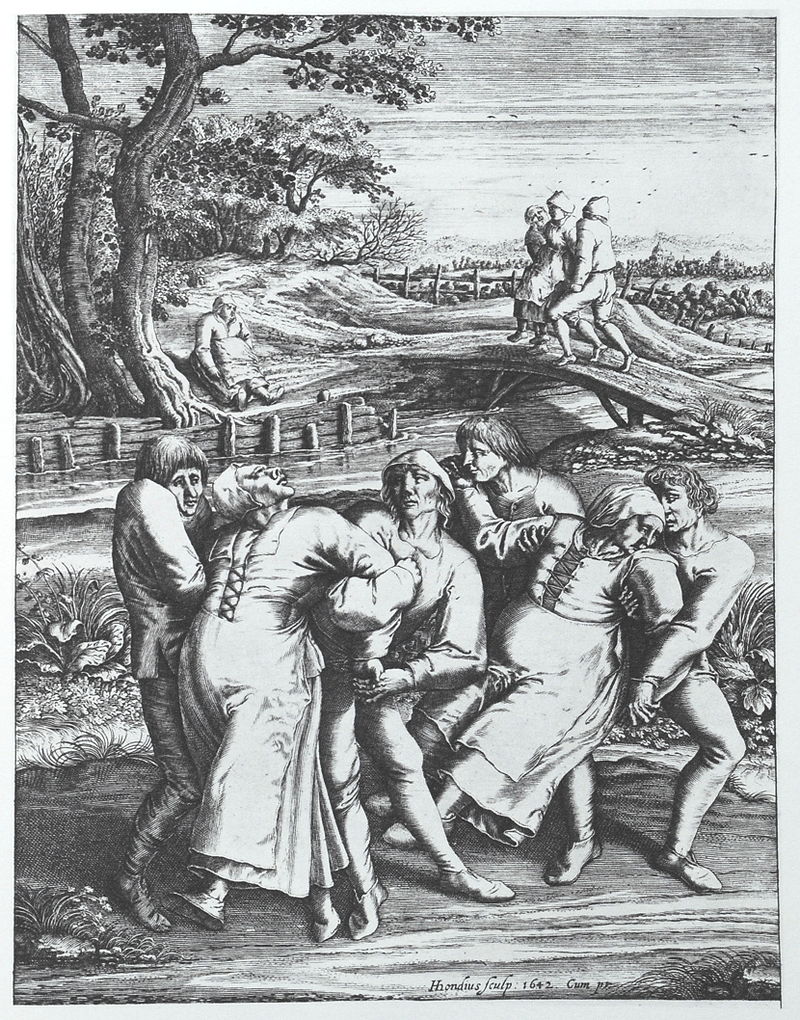
William Falconer (1744-1824), physician at Bath General Hospital, recalled seeing what he described as ‘hysterical’ contagion spread before his eyes in a church in the spa town of Buxton sometime before 1791. It occurred during divine service, and ‘in less than a minute, six persons were affected in a similar manner, some of whom had never been subject to such attacks, but were notwithstanding violently agitated and convulsed in body as well as mind.’
Another curious outbreak occurred at Pedder’s and Emmett’s cotton spinning mill in Hodder Bridge, Lancashire, in February 1787. It started when a mill girl dropped a mouse into the cleavage of another girl who was known to have a dread of mice. The poor girl immediately went into paroxysms out of fear. Her convulsions then spread to other girls so that within days twenty-four were infected with the fits. Twenty-one of them were young women, two were around ten years old, and one was a man who ‘had been much fatigued with holding the girls.’ The symptoms were reported as ‘anxiety, strangulation, and very strong convulsions; and these were so violent as to last, without any intermission, from a quarter of an hour to twenty-four hours’. Three of them were workers at a factory in Clitheroe, five miles away, and two had had no contact with the others but had heard reports of their condition before being struck down with convulsions. The factory workers and locals became convinced that some plague had been introduced by a bag of cotton from abroad. They were reportedly all cured by the application of electric shocks by a Preston doctor named St. Clare.
The biggest English convulsive episode of the nineteenth century occurred in 1814. It began at a Wesleyan Methodist chapel in Redruth, Cornwall, before spreading rapidly to other towns in the county. It was estimated at the time that some four thousand people were affected, mostly girls and young women but old men and boys as well, many of them with the usual symptoms of religious excitation, shaking, crying, jumping, and shouting. A local named James Cornish wrote up a first-hand account of the epidemic for the London Medical and Physical Journal in which he described it as a convulsive ‘disease’ that resembled chorea in its incipient stage: ‘Some ascribe it to the spirit of God, others to the spirit of the Devil, others to intoxication, others to insanity, and others to the influence of the passions’.
Some physicians also attributed these mass fits to bad food or bad air. The term ‘cereal convulsion’ was coined and attributed to eating spoiled rye or wheat. It was also known as Raphania, a word that derived from the old Latin name for a wild radish that grew widely in arable fields.


Linnæus (1707-1778) noted it was prevalent in Sweden, particularly in barley crops, and deduced that its seeds were toxic. When ground with cereal grains and eaten as bread it caused convulsive fits. Raphania stuck as a name for such bouts of rural epidemic convulsions even though subsequent analysis proved the wild radish to be harmless. Besides, as the British botanist Gilbert Burnett pointed out in 1835, the wild radish was equally widespread in England and Scotland but no epidemic cases had been recorded as in Scandinavia. By the 1840s, Raphania or cereal convulsions began to be explained in medical circles as the result of ergotism – the toxic ‘gangrenous’ properties of the ergot fungus that grows on rye and contains lysergic acid.
After this 1814 outbreak, mass contagious fits disappeared in England, though there was a major outbreak of evangelical religious convulsions in Ulster in 1859 and an associated manifestation in the Scottish village of Ferryden. By this time, the psychiatric profession and asylum system were fully established, and the outbreaks were explained in terms of epidemic religious insanity.

In light of the events in Ulster, some fears were expressed that the tour of England by the American evangelists Dwight L. Moody (1837-1899) and Ira D. Sankey (1840-1908) between 1873 and 1875 would leave a trail of insanity in its wake. But there were no epidemic manifestations, only a few individual cases, such as a 27-year-old Sunday School teacher from Salford who had been in ill health. After attending four of the services she had incessantly repeated a hymn sung by Sankey called ‘Dare to be a Daniel’. By the time of the Welsh Revival of 1904-1905, talk of religious insanity still circulated but the recent rise of psychology and psychoanalysis changed the nature of medical discourse about such contagious behaviour.